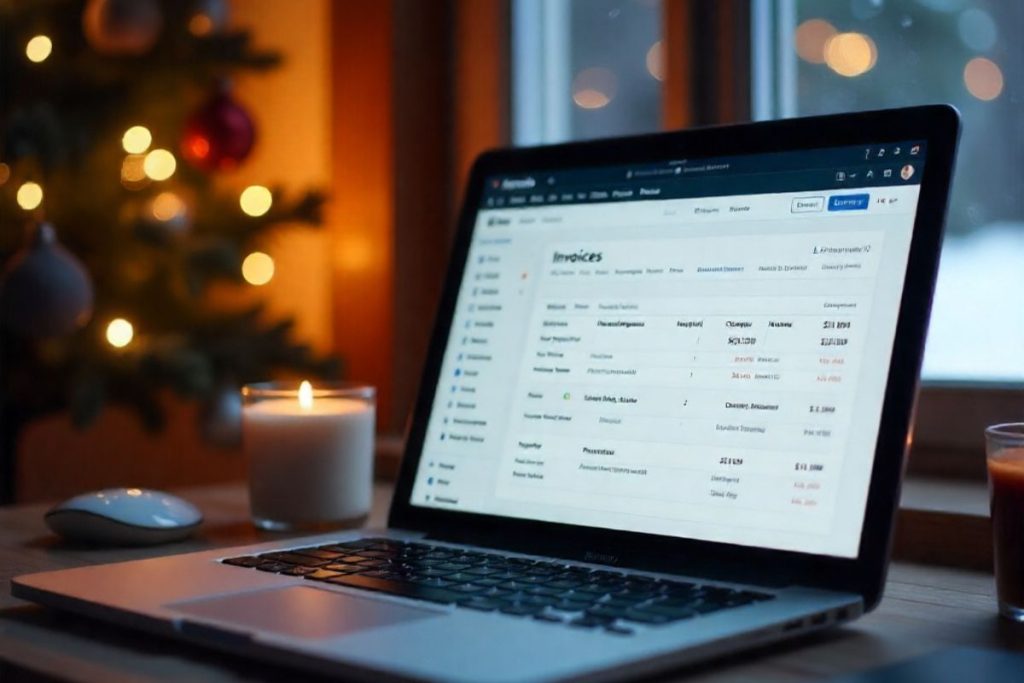Running a SaaS business but confused about money? You’re not alone! Many owners struggle with billing and tracking revenue. SaaS accounting services can help you grow your business.
This guide shows you everything about SaaS accounting. You’ll learn simple tips to make smart money decisions.
What is SaaS Accounting?
SaaS accounting involves managing money for subscription businesses. Regular stores sell once. Customers pay SaaS companies monthly or yearly.
Think of a gym membership. Customers pay every month to use the service. SaaS accounting involves tracking this recurring money. Harder than regular business accounting.
Why SaaS is Different
Regular Business vs. SaaS Business
– Sell once vs. Monthly payments
– Get money now vs. Get money over time
– Simple tracking vs. Complex tracking
– Basic records vs. Detailed data
Why You Need Special Accounting
SaaS businesses face unique problems:
1. Money Recognition is Complex
The customer pays $120 for a one-year subscription. You can’t count all $120 right away.You must spread it over 12 months ($10 each month). This follows revenue recognition standards. It affects your balance sheet, too.
2. Different Payment Types
- Monthly plans
- Yearly plans
- Pay-as-you-use billing
- Free trials that become paid
- Contract signed amounts billed in advance
3. Customer Changes
- New customers
- Upgrades and downgrades
- People who cancel
- Getting customers back
Important Numbers to Track
These key SaaS metrics show if your business is healthy:
Monthly Revenue (MRR)
This shows how much money you get each month.
Example: 100 customers pay $50/month = $5,000 MRR
Yearly Revenue (ARR)
This shows yearly income from subscriptions.
Formula: ARR = MRR × 12
Other Important Numbers
- Cost to get new customers
- How long customers stay
- How many customers leave

What SaaS Accounting Services Do
1. Handle Revenue Rules
Experts help you follow revenue recognition standards. This keeps you compliant and demonstrates true financial management to investors.
2. Make Reports
- Monthly money reports with balance sheet details
- Cash flow predictions
- Budget tracking
- Reports for investors using key SaaS metrics
3. Handle Taxes
- Sales tax in different states
- Tax credits
- Quarterly filings
- Balance sheet tax planning
4. Daily Bookkeeping
- Record all transactions
- Match bank records
- Track expenses
- Manage invoices
- Track contract signed amounts billed
5. Plan for Growth
- Predict future growth
- Prepare for funding
- Value your business
- Financial management strategy
Why Use Professional Services
Save Money
Hiring full-time staff costs $60,000-$120,000 per year. Services cost 50-70% less and give you expert financial management.
Save Time
Business owners save 10-20 hours per week. This lets you focus on your product and customers.
Get Expert Help
Pros understand revenue recognition standards. They know how SaaS accounting involves special rules.
Grow Easily
Services grow with your business. Start small and add more as you grow.

Best Accounting Software
Top Picks:
- QuickBooks Online – Good for small businesses and basic financial management
- Xero – Best for revenue recognition standards
- FreshBooks – Good for subscriptions
Must-Have Features:
- Automatic revenue tracking
- Subscription billing
- Real-time dashboards showing key SaaS metrics
- Tax tools
- Balance sheet automation
When You Need Help
Small Business (Under $100K yearly)
- Basic bookkeeping
- Tax help
- Simple balance sheet work
Growing Business ($100K-$1M yearly)
- Advanced revenue recognition standards
- Investor reports with key SaaS metrics
- Cash planning
- Complex financial operations
Large-scale Business ($1M+ yearly)
- Strategic CFO services
- International rules
- Audit preparation
- Advanced balance sheet work
Revenue Recognition Made Simple
Revenue recognition standards have 5 steps:
- Find the contract
- Know what you must deliver
- Set the price
- Split the price
- Record revenue when you deliver
Example:
Customer pays $1,200 for yearly software:
- Contract signed amounts billed: $1,200
- Monthly revenue: $100
- Remaining on balance sheet: $1,100 (first month)
Common Problems
1. Multiple Income Sources
- Subscription fees
- Setup costs
- Extra services
- Add on features
2. Customer Changes
- Mid contract upgrades
- Downgrades
- Cancellations
- Refunds
3. Growth Challenges
- Scaling financial operations
- Keeping data accurate
- Training team on key SaaS metrics
Getting Started
Step 1: Check Your Needs
- Monthly revenue
- Number of customers
- How complex your pricing is
- Revenue recognition standards need
Step 2: Pick Service Level
- Basic ($500-$1,500/month)
- Full service ($1,500-$5,000/month)
- Strategic ($5,000+/month)
Step 3: Set Up
- Move your data (1-2 weeks)
- Set up processes (2-3 weeks)
- Train team (1 week)
- Start managing financial operations
Future Trends
- AI-powered analyzing
- Real-time tracking
- Automated compliance
- Better predictions using key SaaS metrics
Key Points to Remember
- Revenue recognition standards are crucial
- Key SaaS metrics like MRR and ARR matter most
- Professional financial operations save time and money
- Pick software that fits your financial management needs
- Know the difference between the contract signed amounts, billed, and revenue earned
- Check your balance sheet regularly
- SaaS accounting involves special complexity
Conclusion
SaaS accounting services help subscription businesses grow. From basic bookkeeping to strategic financial management, pros help you understand money and make smart choices.
Ready to take control? Contact a SaaS accounting specialist today to discuss your financial management needs.
Start now – Get professional help and grow your business in 2025!